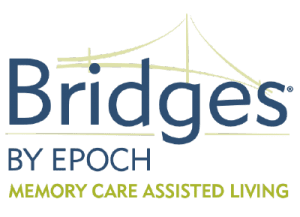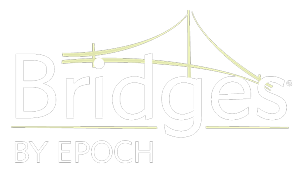What’s the difference between “dementia” and “Alzheimer’s?” Are they the same disease? And what about other forms of memory impairment? While these names can sometimes be used interchangeably, “dementia” is actually a general term to describe a group of diseases that cause a decline in mental and cognitive abilities. Alzheimer’s disease is the most common and well-known form of dementia, but there are 11 distinct types of dementia, some rarer than others.
“It’s important to remember that although memory issues and forgetfulness is a common symptom of getting older, dementias like Alzheimer’s disease are not a normal part of aging,” says Phil Noto, Executive Director of Bridges® by EPOCH at Trumbull, a memory care assisted living community in Trumbull, CT. “Dementias attack the brain and cause a gradual loss of abilities, memory being just one of them. Dementia eventually affects the entire body physically, emotionally and mentally.”
The Most Common Forms of Dementia
- Alzheimer’s Disease. Sixty to 80 percent of people with dementia have this form of the disease. Symptoms include memory loss, anxiety, paranoia, anger, difficulty with speech and communication, and overall confusion.
- Vascular Dementia. This is the second most common form of dementia, with approximately 20 percent of dementia patients living with this form. This type of dementia generally occurs when something happens to restrict blood flow to the brain, usually some form of a stroke. However, a stroke is not the only way this form of dementia develops. Symptoms are very similar to the symptoms of Alzheimer’s.
- Lewy Body Dementia (LBD). This form of dementia occurs when nerve cells develop abnormal proteins. Symptoms are the same as other dementias, and the only way to know for certain whether a person has this form of dementia is by a brain autopsy.
- Parkinson’s Disease Dementia (PDD). PDD overwhelmingly occurs in individuals with Parkinson’s disease. Approximately 50-80 percent of individuals with Parkinson’s will develop this form of dementia.
- Frontotemporal Degeneration (FTD). Considered to be a “younger person’s” dementia, FTD is different from other dementias in that it does not affect memory. Instead, because of the deterioration of the frontal lobe of the brain, FTD causes loss of motivation and empathy, as well as an increase in compulsive behaviors, depression and anxiety.
The Stages and Symptoms of Dementia
Health professionals rate dementia on seven levels: No impairment, very mild, mild, moderate, moderately severe, severe, very severe. For the layperson, however, it’s generally easier to group the stages of dementia into four main buckets: no dementia, early-stage, mid-stage and late-stage dementia.
No dementia. This stage includes people with no dementia, at all as well as those with very mild symptoms. No obvious signs of dementia are visible, individuals can still function independently and everything, in other words, is normal. It’s possible that there are some very mild signs of dementia that can be brushed off as simple forgetfulness, such as not knowing where you’ve put your keys.
Early-stage. At this stage, the individual with the disease is still able to function independently, but is showing some symptoms that could either be normal aging or something more serious. While family members may notice that Mom or Dad is having “senior moments,” generally this stage doesn’t immediately cause concern – or if there is concern, it’s brushed to the side. Symptoms of early-stage dementia include:
- Memory loss and forgetfulness, such as not remembering where something was put down
- Repeating stories or questions more and more frequently
- Not being able to retrace your steps to find lost items
- Difficulty with medication management
- Difficulty concentrating and an increase in confusion
- Slight difficulty managing finances, like balancing a checkbook or forgetting to pay a bill occasionally
Mid-stage. This is the longest stage of dementia and is usually the stage when the disease is diagnosed because the individual now requires assistance in order to live safely and securely. At this point, the damage to the brain has become severe enough that the individual is having obvious difficulty with daily tasks, is experiencing worrisome memory issues and is having more and more difficulty expressing their thoughts. Family members and friends notice that their loved one is having trouble doing normal, everyday tasks like cooking or cleaning. Other symptoms and signs of this stage of dementia can include:
- Behavior and mood changes like depression, anger, anxiety, aggressiveness, wandering or paranoia
- Incontinence
- An increase in forgetfulness and memory loss, forgetting important personal details like home address or phone number
- Increasingly becoming socially isolated and withdrawn
- Inability to use or find the right words and phrases
- Increased confusion about where they are or having difficulty following a series of events
- Forgetting what time of year it is
Late-stage. In this final stage of dementia, individuals can no longer live independently and require around-the-clock care. They may not be able to verbally communicate or only have a small command of words available. Their memory has worsened to the point to where they do not recognize family members and can’t remember what they did half an hour ago. As this stage progresses towards the end of life, individuals will lose function of their motor and physical skills and may become bedridden. Other signs of late-stage dementia include:
- Assistance with all activities of daily life, including bathing, dressing, eating and moving around
- Wandering and becoming lost if not supervised
- Being unable to remember family members’ names, and eventually not being able to recognize them at all
- Increased paranoia and hallucinations
- Loss of muscle control, making them unable to swallow, smile or walk without support
If you would like more information about the different types of dementia, as well as their stages and symptoms, please contact us at 203.397.6800.
Personalized Lifestyle
Bridges® by EPOCH at Trumbull’s highly specialized, resident-centered BRIDGES® program is a positive, uplifting approach to memory care and wellness that focuses on a resident’s current skills and abilities, not on those that have been lost to dementia.
Each programming plan is as unique as the resident it serves, requiring all Bridges® team members to take an active interest in getting to know each resident on a personal level. Then, accounting for a particular resident’s preferences, interests, needs and abilities, we customize the most efficient blend of expert-recommended care, exercises, activities and communication techniques in order to connect with the individual, encourage their involvement in daily life and create happy, meaningful moments.
Intimate Environment
Bridges® by EPOCH at Trumbull features four distinct households, each with its own spacious common areas, along with 14 private and two companion suites. Suites feature private bathrooms and walk-in showers.
Each household has a home-like look and feel, creating an atmosphere of warmth, security and comfort for our residents and their families. While furnishings are provided, we encourage families to furnish their loved ones’ suites with favorite possessions from home to help them feel at home.
Featuring stunning residential design that complements the surrounding community, every inch of the interior is designed to benefit those with Alzheimer’s disease and memory loss. Attributes such as soft colors, directional cues, aromatherapy and interactive life stations create a soothing and secure environment where residents feel comfortable and safe.
Call us today at 203.397.6800 to learn more about Bridges® by EPOCH at Trumbull or to schedule a personal tour.


